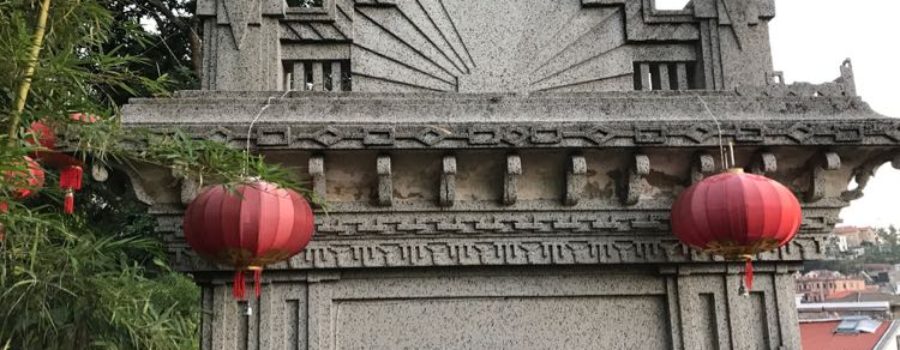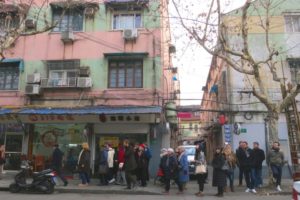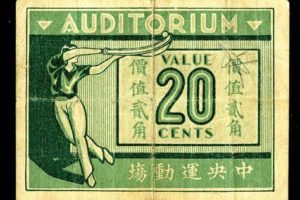This March 24-26 2017, we’re exploring the hidden and fast-disappearing Art Deco gems of Xiamen, the former treaty port once known as Amoy – there are lots of good reasons to join us, including member discounts, and a dazzling itinerary. For booking information, click here.
- Amoy’s distinctive vernacular Art Deco
One of Art Deco’s unique qualities is its internationalism: not only is it found in more places around the world than any other architectural style, Art Deco architects often integrate local elements into their designs, and Xiamen is no exception. First known to foreigners as Amoy (its name in the local Minnan dialect), the city was established as a treaty port after the first Opium War in 1842. Amoy Art Deco mixes the neoclassical elements of earlier western architecture with Art Deco and modernism; Eastern designs with classic Art Deco styles, and “Shophouse Deco”, the traditional Southeast Asian shophouse in the Art Deco style.
- Chinese Art Deco villas built in the 1960s
Xiamen’s Overseas Chinese Village is a beautiful enclave of Art Deco villas with Chinese characteristics – Chinese designs in the ironwork and the terrazzo, for example. These were built in the 1960s by the government for overseas Chinese from Southeast Asia, who were then facing anti-Chinese, anti-Communist persecution. Today, the villas have been converted into uber chic cafes, boutique hotels, and restaurants, and are a favorite backdrop for wedding photographs (of course!).
- An island of historic architectural treasures
Gulangyu became an International Settlement in 1902, making it one of only two International Settlements in China (the other being Shanghai), with 13 countries represented on the Kulangsu Municipal Council. The architecture of these 13 countries remains on this beautiful island, from former consulates, to schools, missionary buildings, churches, hospitals, and grand island residences.
4. Tales from Xiamen insiders
The story of China – and Xiamen – has many, many layers, and we’re fortunate to have as our guides Xiamen insiders who have peeled back these layers, studying the history, interviewing the residents, and living the the history. You’ll meet Aaron, an Amoy historian and native, the owner of the Old Amoy antique shop, who knows the minutiae of the city’s back lanes and alleys. Bjorn, our Gulangyu guide, is a student of Gulangyu’s unique history who is working on restoring a one-of-a-kind Gulangyu Art Deco mansion and knows the ins-and-out of the island. We’ll also meet a Xiamen resident who’ll share his stories of living through the Japanese occupation, and hear about the famous Amoy Soy Sauce Company from a descendant of the founders.
- Disappearing Amoy
Most compelling of all, old Amoy is fast disappearing under the wrecking ball, and just as perniciously, high-end renovations that leave little but facades. Already half the waterfront is gone, replaced by anonymous glass skyscrapers – who knows how much longer the twisting lanes and hidden mansions will remain?
For more information on the upcoming Amoy Art Deco Weekend, click here.










Most Commented Posts